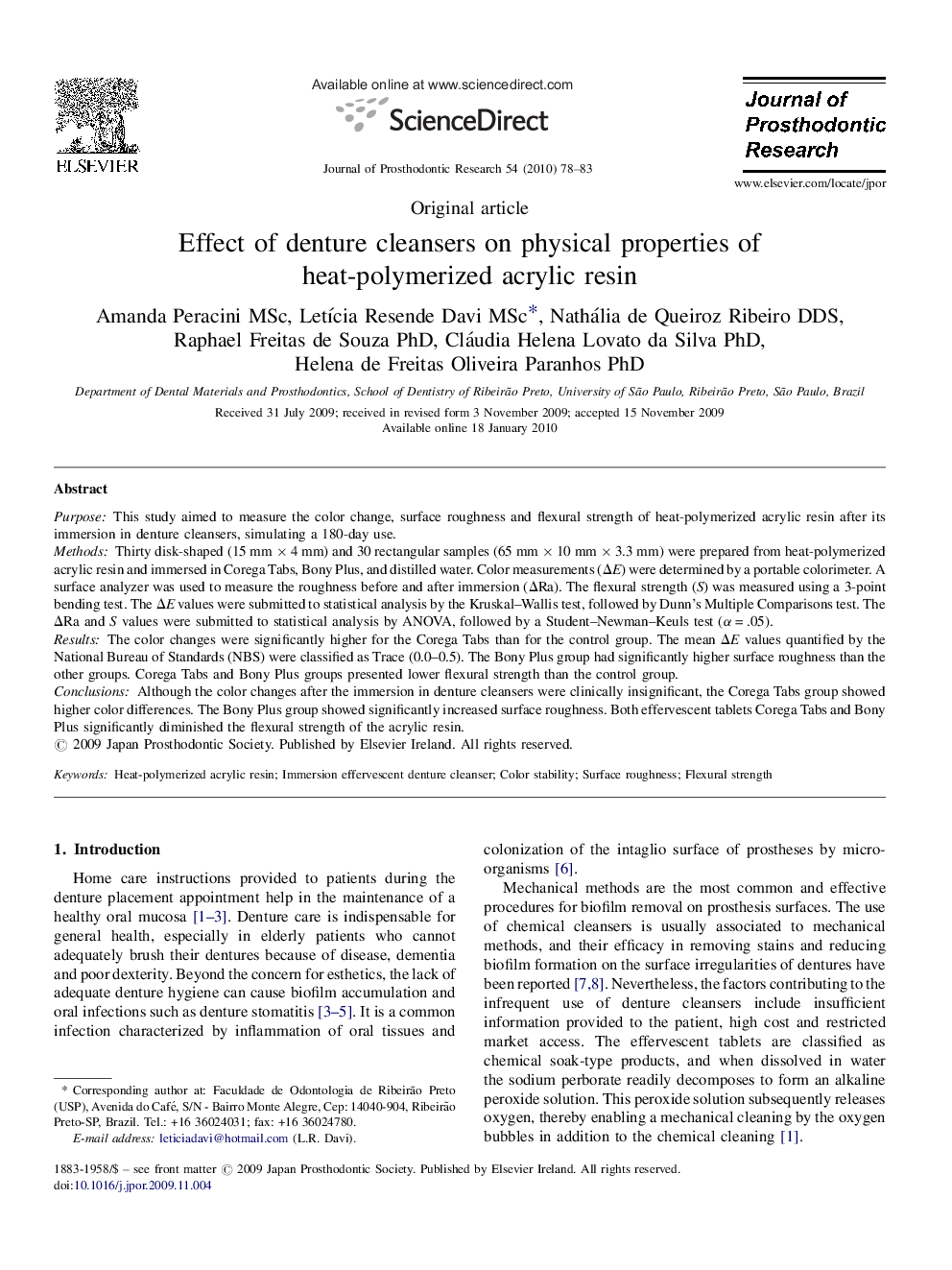| Article ID | Journal | Published Year | Pages | File Type |
|---|---|---|---|---|
| 3160700 | Journal of Prosthodontic Research | 2010 | 6 Pages |
PurposeThis study aimed to measure the color change, surface roughness and flexural strength of heat-polymerized acrylic resin after its immersion in denture cleansers, simulating a 180-day use.MethodsThirty disk-shaped (15 mm × 4 mm) and 30 rectangular samples (65 mm × 10 mm × 3.3 mm) were prepared from heat-polymerized acrylic resin and immersed in Corega Tabs, Bony Plus, and distilled water. Color measurements (ΔE) were determined by a portable colorimeter. A surface analyzer was used to measure the roughness before and after immersion (ΔRa). The flexural strength (S) was measured using a 3-point bending test. The ΔE values were submitted to statistical analysis by the Kruskal–Wallis test, followed by Dunn's Multiple Comparisons test. The ΔRa and S values were submitted to statistical analysis by ANOVA, followed by a Student–Newman–Keuls test (α = .05).ResultsThe color changes were significantly higher for the Corega Tabs than for the control group. The mean ΔE values quantified by the National Bureau of Standards (NBS) were classified as Trace (0.0–0.5). The Bony Plus group had significantly higher surface roughness than the other groups. Corega Tabs and Bony Plus groups presented lower flexural strength than the control group.ConclusionsAlthough the color changes after the immersion in denture cleansers were clinically insignificant, the Corega Tabs group showed higher color differences. The Bony Plus group showed significantly increased surface roughness. Both effervescent tablets Corega Tabs and Bony Plus significantly diminished the flexural strength of the acrylic resin.
